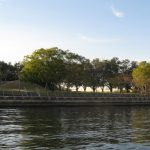The Twin Cities have an emerging multi-modal regional transit system with Minneapolis at the center of the system. The Hiawatha Light Rail Line started operations in 2004; Northstar Commuter Rail began operations in November 2009; Central Corridor LRT is scheduled to be operational in 2014; BRT along Interstate 35W in 2010; Southwest Corridor LRT by 2016; Bottineau Blvd Transitway is in its Alternative Analysis stage; the new Downtown Intermodal Station is being designed; and streetcar and high speed rail to Duluth and Chicago are being explored. The Hiawatha Corridor is exceeding ridership and development portfolioions, but critical gaps exist. The next step in the Hiawatha Corridor is to make strategic and coordinated investments that catalyze a second phase of transit oriented development, one that achieves build-out of complete communities around each station.
The 38th Street Station along the Hiawatha line exemplifies some of the challenges with redeveloping focused on transit access-large-scale industrial properties adjacent to the station present compatibility questions for new residential or mixed-use developments.
Each transit corridor is very different in terms of existing land uses and placemaking, governance structure and barriers to redevelopment. The City, along with its many public and private partners, has undertaken several steps to implement its TOD plans. They vary by corridor/station area and include land use and implementation planning, ordinance revisions, program redesign, legislative proposals, development assistance, minor capital improvements and new partnership models. There have been some successes – new developments, some public realm improvements, better partnerships – but we clearly have not yet achieved our vision. Challenges include fragmented public and private ownership of land and processes, lack of local resources for infrastructure and required match, ad hoc nature of investments, scalability/focus of impact, physical/site barriers, and, of course, the market.




